What is Natural Heritage?
Natural Heritage is the legacy of natural, not man-made, places.
You may live close to a forest or a magnificent coastal area.
This is part of your Natural Heritage.
When a place has a natural outstanding importance to the common heritage of the humanity it can be one of the UNESCO Natural
Heritage sites. Those places that are part of the UNESCO Natural Heritage List are considered to be "natural heritage"
because of their:

Southern right whale (Eubalaena australis), Peninsula Valdés, Patagonia, Argentina
Photo: Michaël Catanzariti / Wikimedia Commons
|
- natural features consisting of physical and biological formations or groups of such formations, which are of outstanding
universal value from the aesthetic or scientific point of view;
- geological and physiographical formations and precisely delineated areas which constitute the habitat of threatened species
of animals and plants of outstanding universal value from the point of view of science or conservation;
- natural sites or precisely delineated natural areas of outstanding universal value from the point of view of science,
conservation or natural beauty.
|
(Article 2 of the UNESCO World Heritage Convention http://whc.unesco.org/archive/convention-en.pdf)

Mountain lake in the Sorapiss massif in the Dolomites, Italy
Photo: Llorenzi / Wikimedia Commons
The idea of combining conservation of cultural sites with those of nature comes from the United States of America.
A White House Conference in Washington, D.C., in 1965 called for a 'World Heritage Trust' that would stimulate
international cooperation to protect "the world's superb natural and scenic areas and historic sites
for the present and the future of the entire world citizenry". In 1968, the International Union for Conservation
of Nature (IUCN) developed similar proposals for its members.
These proposals were presented to the 1972 United Nations Conference on the Human Environment in Stockholm.
Eventually, a single text was agreed upon by all parties concerned. The Convention concerning the Protection of
World Cultural and Natural Heritage was adopted by the General Conference of UNESCO on 16 November 1972.
By regarding heritage as both cultural and natural, the Convention reminds us of the ways in which people interact with nature,
and of the fundamental need to preserve the balance between the two.
How can remote sensing tools be useful for the conservation and study of Natural Heritage sites?
Check out the following case studies and you will find the answer!
The Everglades National Park, United States of America
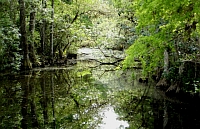
The Everglades National Park, USA.
Photo: UNESCO
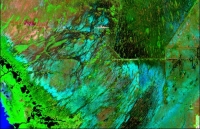
The Everglades National Park, USA, from space.
Source: NASA
The Everglades National Park at the southern tip of Florida (United States) has been called "a river of grass
flowing imperceptibly from the hinterland into the sea". The exceptional variety of its water habitats has made it a sanctuary for
a large number of birds and reptiles, as well as for threatened species such as the manatee.
Want to know more? Check out the
Case study about the Everglades National ParkVirunga National Park, Democratic Republic of Congo

Gorillas in Virunga National Park, Democratic Republic of Congo.
Photo: Juan Pablo Moreiras / UNESCO

Virunga National Park, Democratic Republic of Congo, from space.
Source: NASA
Virunga National Park (covering an area of 790,000 ha) comprises an outstanding diversity of habitats,
ranging from swamps and steppes to the snowfields of Rwenzori at an altitude of over 5,000 m, and from lava plains to the savannahs
on the slopes of volcanoes. In later years it has become known for its mountain gorillas.
Want to know more? Check out the
Case study about Virunga National ParkIguazu National Park, Argentina and Brazil
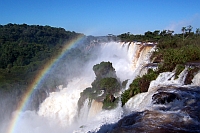
Waterfall and sub-tropical forest in the Iguazu National Park, Argentina.
Photo: Nilsf / Wikimedia Commons
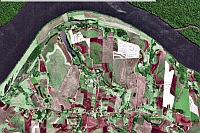
Iguazu National Park, Argentina and Brazil, from space.
Source: SPOT 5
The semicircular waterfall at the heart of this site is some 80 m high and 2,700 m in diameter and is situated
on a basaltic line spanning the border between Argentina and Brazil. The surrounding subtropical rainforest has over 2,000 species
of vascular plants and is home to the typical wildlife of the region: tapirs, giant anteaters, howler monkeys, ocelots, jaguars and
caimans.
Want to know more? Check out the
Case study about Iguazu National ParkLake Baikal, Russian Federation
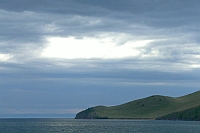
Lake Baikal in the Russian Federation.
Photo: Janine Reichel / UNESCO
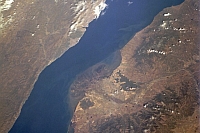
Lake Baikal in the Russian Federation from space.
Source: NASA
Situated in south-east Siberia, the 3.15-million-ha Lake Baikal is the oldest (25 million years) and
deepest (1,700 m) lake in the world. It contains 20% of the world's total unfrozen freshwater reserve. Known as the
'Galapagos of Russia', its age and isolation have produced one of the world's richest and most unusual freshwater faunas,
which is of exceptional value to evolutionary science.
Want to know more? Check out the
Case study about Lake Baikal










